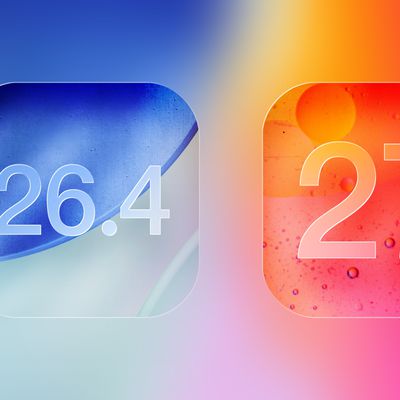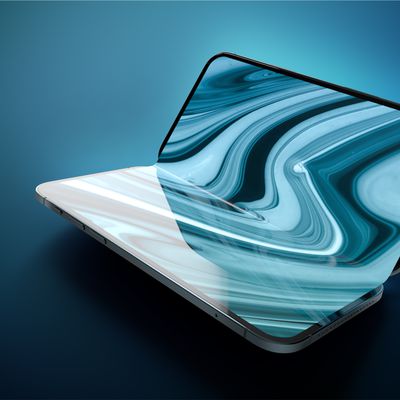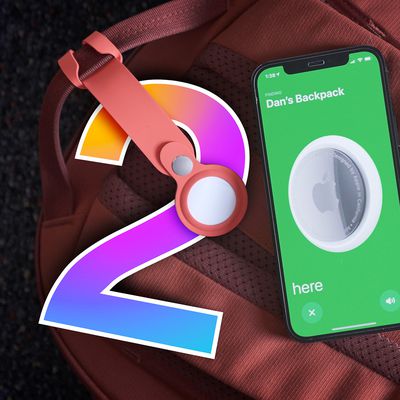OS X Lion Raises Bar on Security, But Battery Firmware Vulnerability Surfaces
 The Register reports on some of the new security improvements in OS X Lion, with researchers calling the changes a "major overhaul" that goes far beyond the minor security tweaks Apple made going from Mac OS X Leopard to Snow Leopard.
The Register reports on some of the new security improvements in OS X Lion, with researchers calling the changes a "major overhaul" that goes far beyond the minor security tweaks Apple made going from Mac OS X Leopard to Snow Leopard.
"It's a significant improvement, and the best way that I've described the level of security in Lion is that it's Windows 7, plus, plus," said Dino Dai Zovi, principal of security consultancy Trail of Bits and the coauthor of The Mac Hacker's Handbook. "I generally tell Mac users that if they care about security, they should upgrade to Lion sooner rather than later, and the same goes for Windows users, too."
In particular, the report points to such features as full support for address space layout randomization (ASLR), application sandboxing, and a revamped FileVault encryption system as being key to Lion's improved security.
"When they went from Leopard to Snow Leopard, as far as I'm concerned, there really wasn't any change," said Charlie Miller, principal research consultant at security firm Accuvant and the other coauthor of The Mac Hacker's Handbook. "They might have said there was more security and it was better, but at a low functionality level there really wasn't any difference. Now, they've made significant changes and it's going to be harder to exploit."
Miller isn't only interested in operating system and core application vulnerabilities, however, as evidenced by his recent discovery of a vulnerability in the chips that control the batteries in Apple's notebooks. That vulnerability could be exploited on a basic level to harm battery function or with additional effort to implant malware that could reinfect computers multiple times.
The batteries' chips are shipped with default passwords, such that anyone who discovers that password and learns to control the chips' firmware can potentially hijack them to do anything the hacker wants. That includes permanently ruining batteries at will, and may enable nastier tricks like implanting them with hidden malware that infects the computer no matter how many times software is reinstalled or even potentially causing the batteries to heat up, catch fire or explode. "These batteries just aren't designed with the idea that people will mess with them," Miller says. "What I'm showing is that it's possible to use them to do something really bad."
Miller plans to officially announce his discoveries at next month's Black Hat conference, and he will also be releasing a new "Caulkgun" tool to allow Mac notebook users to change their batteries' default passwords to randomized strings. That move would help keep hackers out of the batteries, but also prevent Apple from issuing its own upgrades and fixes for the battery firmware. Miller has also been in touch with Apple and Texas Instruments regarding the vulnerability.
Popular Stories
Apple seeded the second iOS 26.2 Release Candidate to developers earlier this week, meaning the update will be released to the general public very soon.
Apple confirmed iOS 26.2 would be released in December, but it did not provide a specific date. We expect the update to be released by early next week.
iOS 26.2 includes a handful of new features and changes on the iPhone, such as a new...
Apple today released new firmware designed for the AirPods Pro 3 and the prior-generation AirPods Pro 2. The AirPods Pro 3 firmware is 8B30, up from 8B25, while the AirPods Pro 2 firmware is 8B28, up from 8B21.
There's no word on what's include in the updated firmware, but the AirPods Pro 2 and AirPods Pro 3 are getting expanded support for Live Translation in the European Union in iOS...
Google Maps on iOS quietly gained a new feature recently that automatically recognizes where you've parked your vehicle and saves the location for you.
Announced on LinkedIn by Rio Akasaka, Google Maps' senior product manager, the new feature auto-detects your parked location even if you don't use the parking pin function, saves it for up to 48 hours, and then automatically removes it once...
Macworld's Filipe Espósito today revealed a handful of features that Apple is allegedly planning for iOS 26.4, iOS 27, and even iOS 28.
The report said the features are referenced within the code for a leaked internal build of iOS 26 that is not meant to be seen by the public. However, it appears that Espósito and/or his sources managed to gain access to it, providing us with a sneak peek...
Apple has ordered 22 million OLED panels from Samsung Display for the first foldable iPhone, signaling a significantly larger production target than the display industry had previously anticipated, ET News reports.
In the now-seemingly deleted report, ET News claimed that Samsung plans to mass-produce 11 million inward-folding OLED displays for Apple next year, as well as 11 million...
Apple today released iOS 26.2, the second major update to the iOS 26 operating system that came out in September, iOS 26.2 comes a little over a month after iOS 26.1 launched. iOS 26.2 is compatible with the iPhone 11 series and later, as well as the second-generation iPhone SE.
The new software can be downloaded on eligible iPhones over-the-air by going to Settings >...
The AirTag 2 will include a handful of new features that will improve tracking capabilities, according to a new report from Macworld. The site says that it was able to access an internal build of iOS 26, which includes references to multiple unreleased products.
Here's what's supposedly coming:
An improved pairing process, though no details were provided. AirTag pairing is already...
Apple is about to release iOS 26.2, the second major point update for iPhones since iOS 26 was rolled out in September, and there are at least 15 notable changes and improvements worth checking out. We've rounded them up below.
Apple is expected to roll out iOS 26.2 to compatible devices sometime between December 8 and December 16. When the update drops, you can check Apple's servers for the ...
Apple is working on a smart home hub that will rely heavily on the more capable version of Siri that's coming next year. We've heard quite a bit about the hub over the last two years, but a recent iOS 26 code leak provides additional insight into what we can expect and confirms rumored features.
Subscribe to the MacRumors YouTube channel for more videos.
Macworld claims to have access to an ...
![]() The Register reports on some of the new security improvements in OS X Lion, with researchers calling the changes a "major overhaul" that goes far beyond the minor security tweaks Apple made going from Mac OS X Leopard to Snow Leopard.
The Register reports on some of the new security improvements in OS X Lion, with researchers calling the changes a "major overhaul" that goes far beyond the minor security tweaks Apple made going from Mac OS X Leopard to Snow Leopard.























